Background to the Yassification
For my upcycling project, I took a cantaloupe and carved a floral design into the surface. The floral aesthetic has been around longer than humans! We put floral patterns in just about any item, ranging from clothing to handbags to bathroom tiles, and even to fruits. My project is based an ancient practice in Thailand, where they compete to create the best floral designs in various melons and other fruits. For my project, I used inspiration from a couple pre-existing designs to create a new design, which I think turned out well. Below are the two main sources of inspiration; for my design, I wanted to use the pattern of the second melon, but with a more complex center. Therefore, I used the design of the center in the first image, and the petal design of the second image. I will refer to the first design as the “rose design”, as I believe that was the goal of the original artist. Additionally I will refer to the second design as the “petal design”, as it seems that the petals were the main focus of the design as opposed to the center like the rose design.
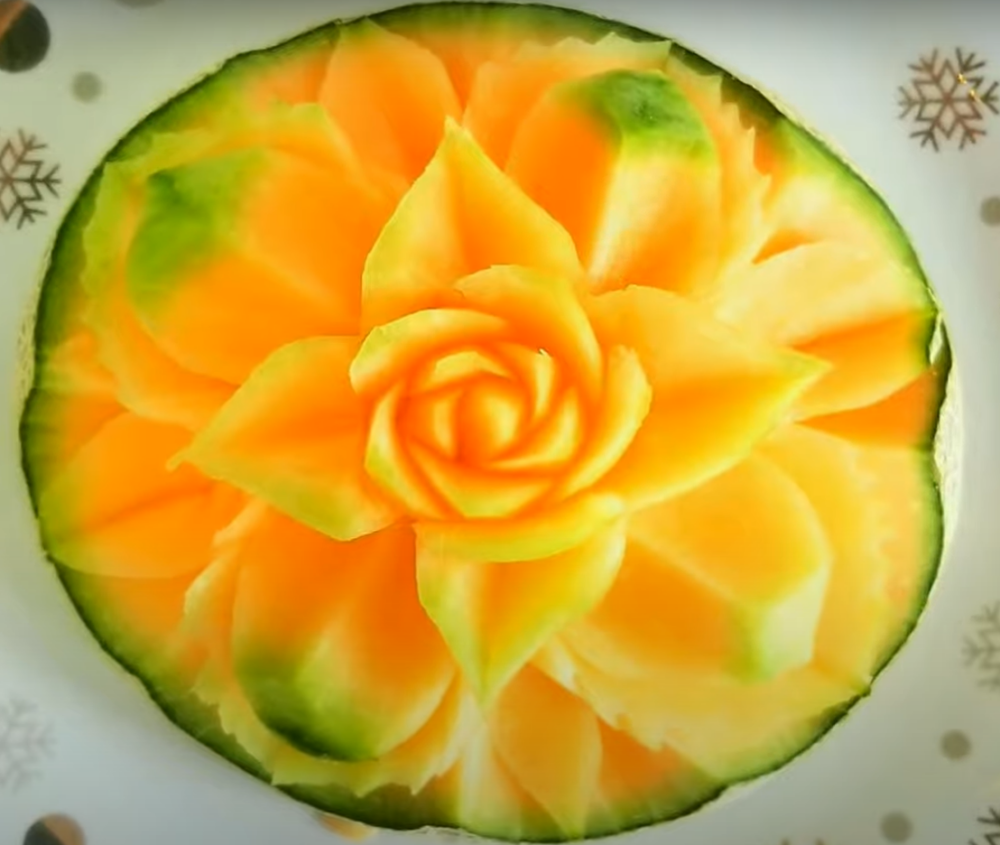
“https://www.youtube.com/watch?v=ChBVKmOxhMw”
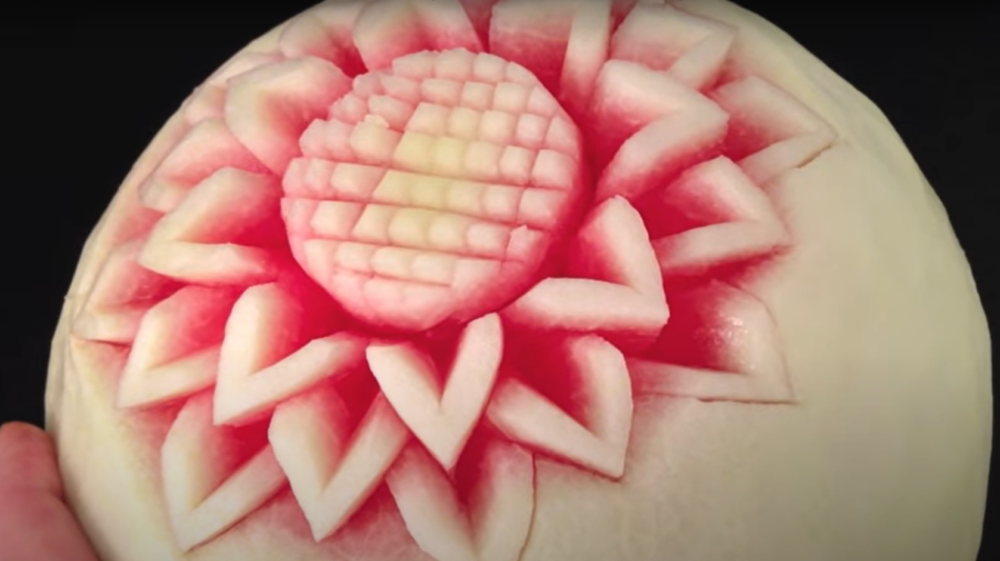
“https://www.youtube.com/watch?v=J0Ozl_SRGVE”
Carving the Melon
The first step was to carefully remove the rind from a large section of the melon without exposing the orange flesh beneath. It was difficult to get a clean surface finish, but with a lot of patience, I was able to complete this step. From here, I carved out a circular center as best I could. I later realized that I could have traced a small, circular object into a more perfect circle, but I think the size of my center turned out pretty good anyways.
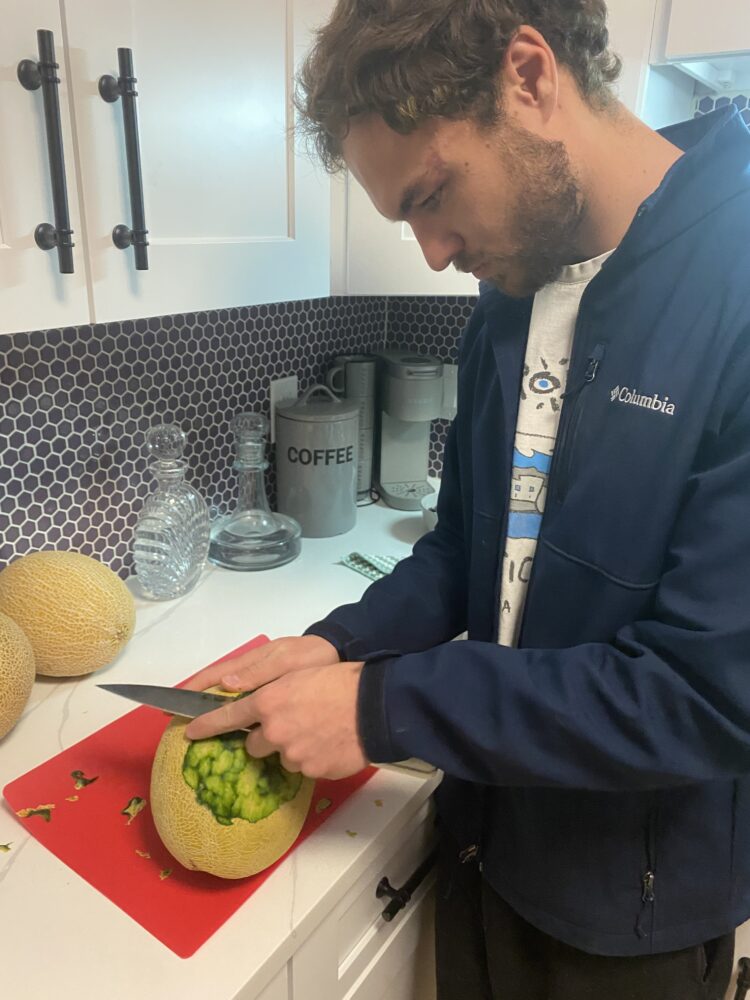
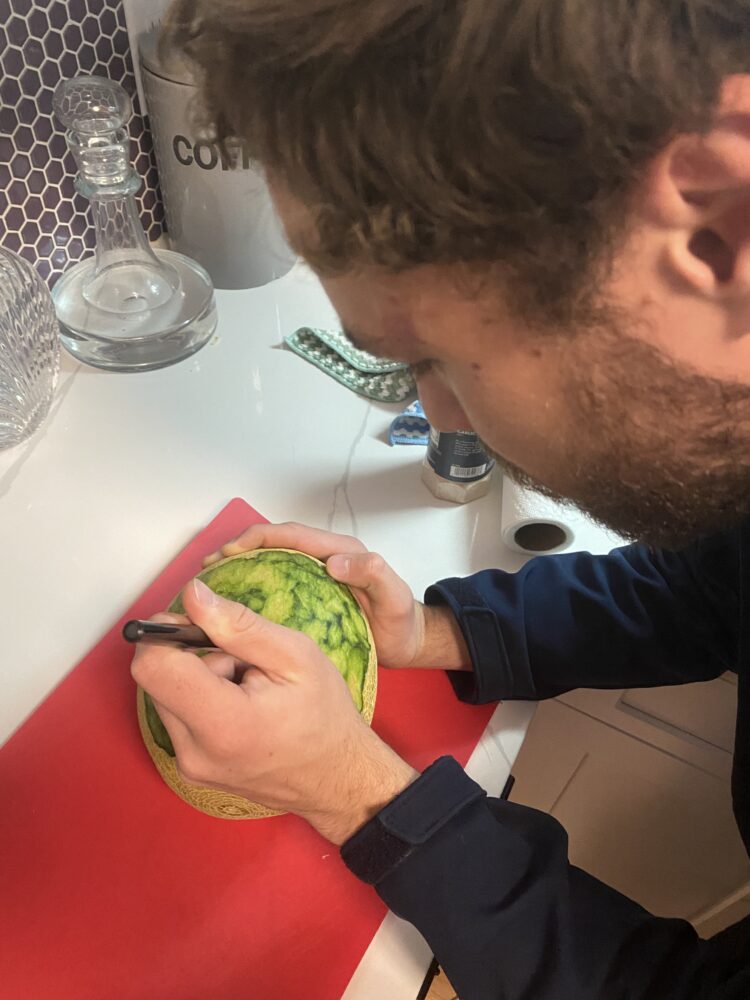
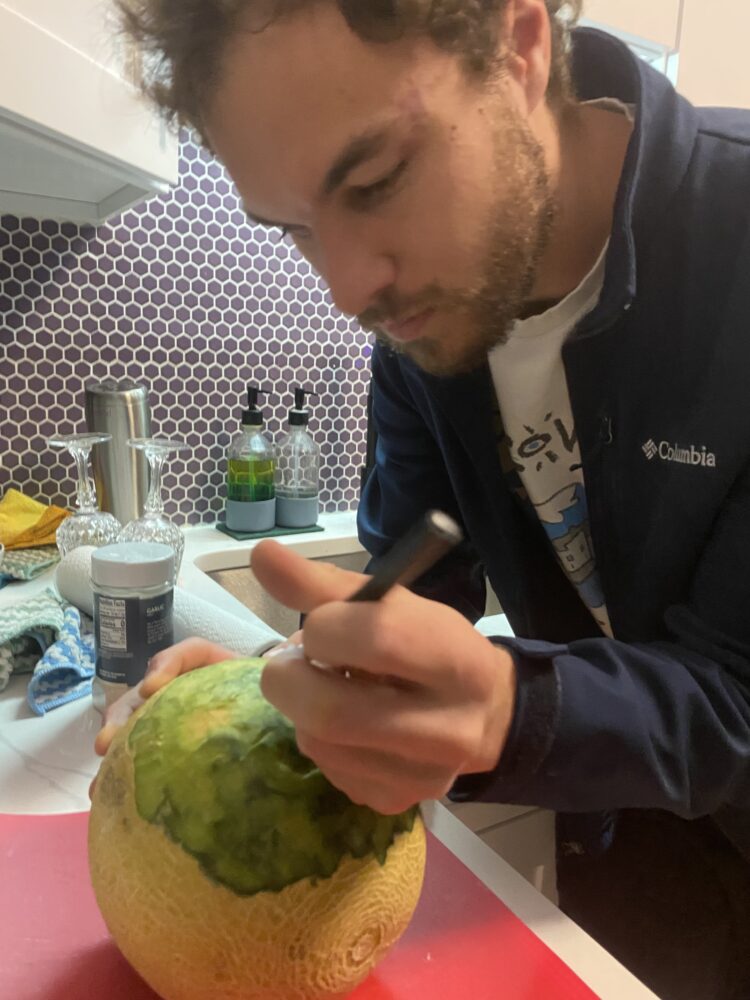
At this point, it was time to create the rose in the center. It was challenging to get circular movements out of the x-acto knife, but I utilized a sawing motion to obtain the fine movement I was looking for. I think the size that I made the circle also complicated this step, as the petals had to be very small to fit within the circle. However, the small circle that outlined the rose structure made the first set of petals a little easier, as there was less material to cut out during this step. For this step, I made 8 petals spiraling into the rose design.
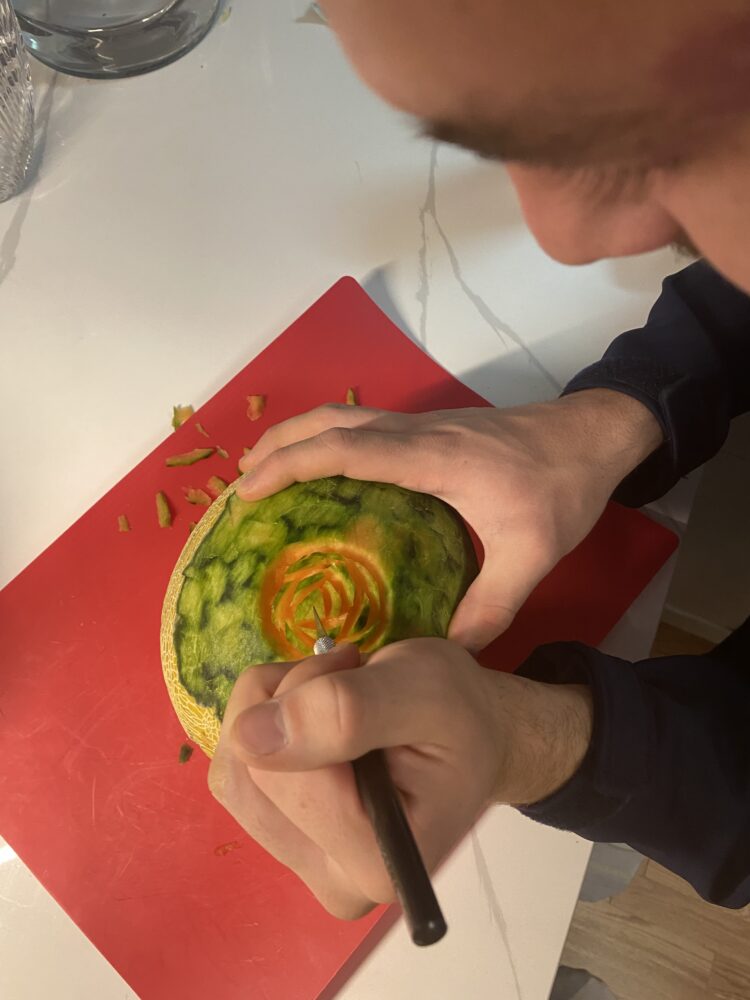

After carving out the first row of petals, I made another row of petals, with the edges of this second row of petals converging on the points of the first row of petals. Below, you can see my final design. I am really happy with my final product, and believe that it fits the floral aesthetic really well, even though my design is composed of two different flowers. For this reason, if I were to do this project again, I think I would attempt to do a more complex petal design. The petal design of the rose flower seemed a little too complex for me, but I think a happy medium between the two flowers will work very well. Additionally, I would want to have the rind end right at the edge of the petals, to create a more complete look.
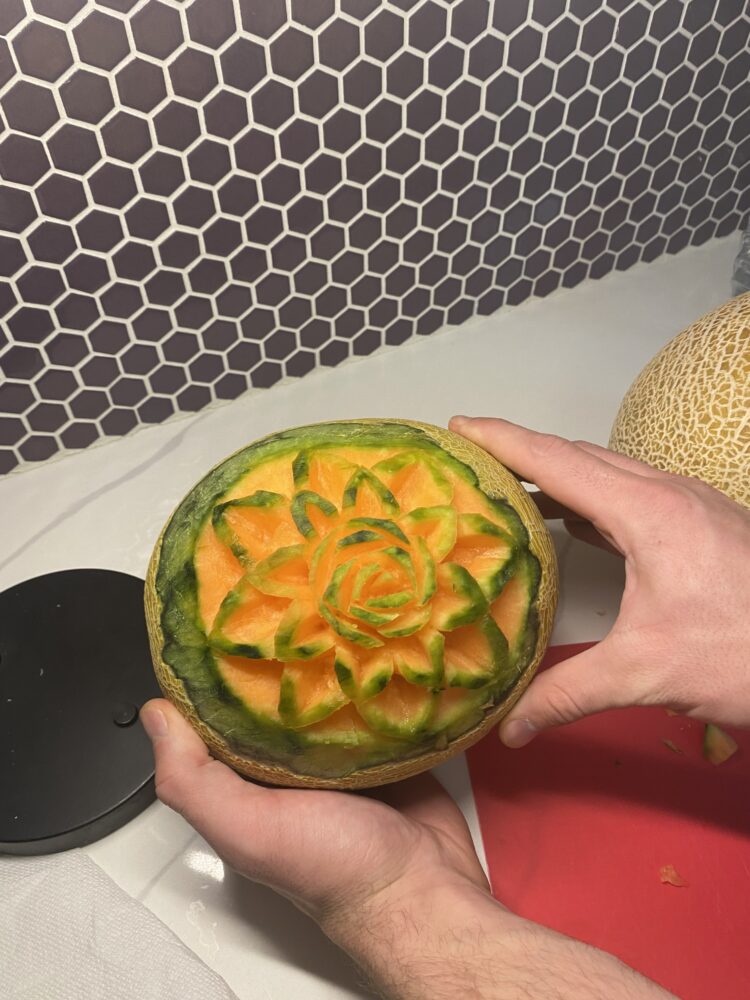

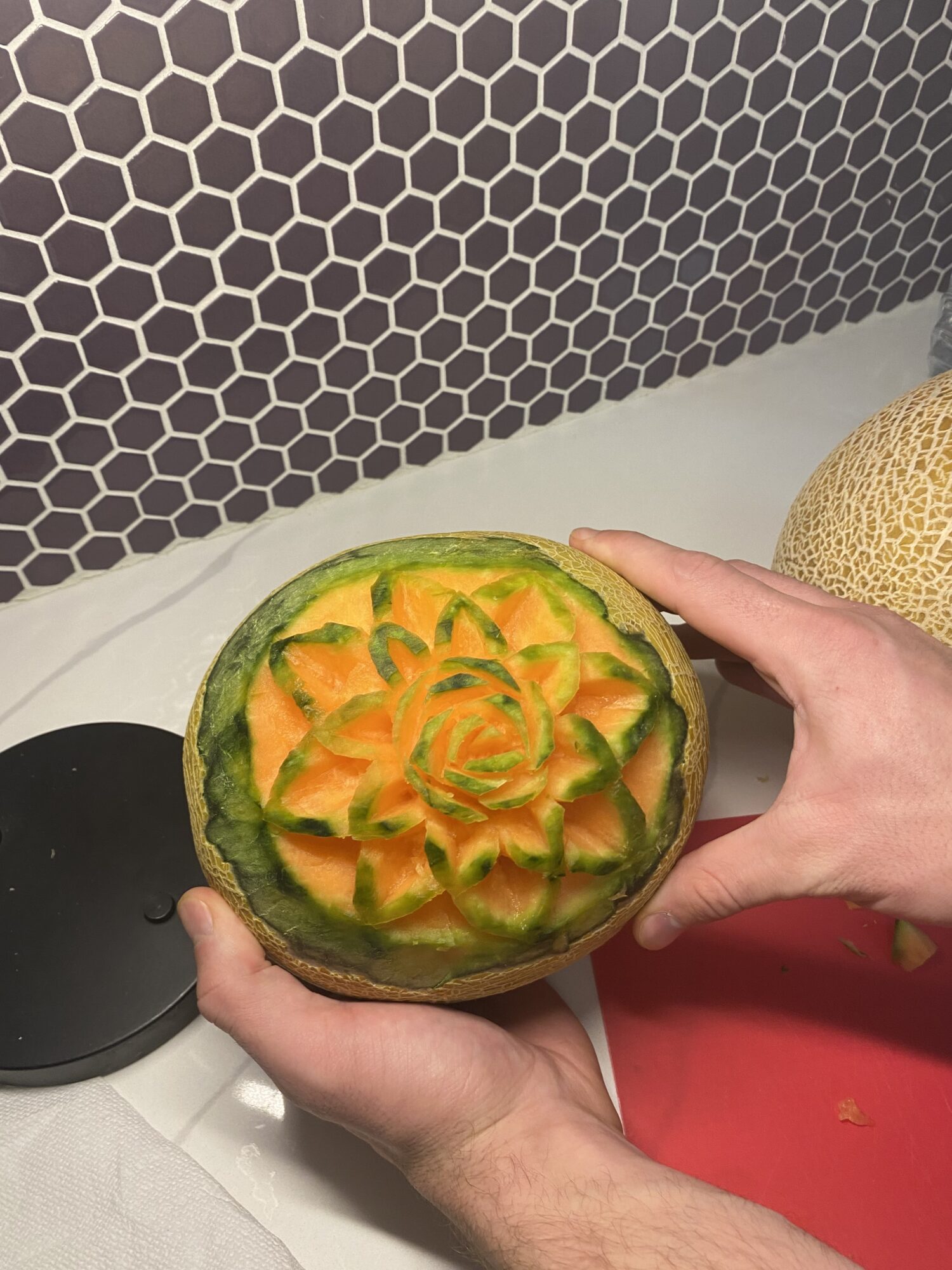
3 Comments. Leave new
Hi Dylan. When I saw the photo along with your title I had to see your project. I am incredibly impressed with the amount of work and effort it must have taken to carve a beautiful floral pattern into the melon. I can only imagine as every time I have tried to carve a pumpkin it is incredibly difficult. I really love your piece because not only is it a great aesthetic but the artistic creativity is phenomenal. I am saddened that the piece will only last for so long, but I was curious if you had any ideas on how to preserve it, I wonder if you could potentially encapsulate it in epoxy, and if not what is next for your aesthetic.
Hey Dylan, your finished melon looks amazing! Your chosen aesthetic was clearly the best choice for this project. I love how you took inspiration for the center of the melon. How long did it take you to be able to do this? Did you have any practice on other melons or was this a first try success?
Hey Dylan, I think tat the melon turned out super cool! It definitely fits your aesthetic and it was interesting to hear about your cutting process. Do you think these designs would work on something like a clay ball, or a more permanent medium that won’t decompose? What’s the plan for the melons you carved, will you leave them around or have them for an afternoon snack?